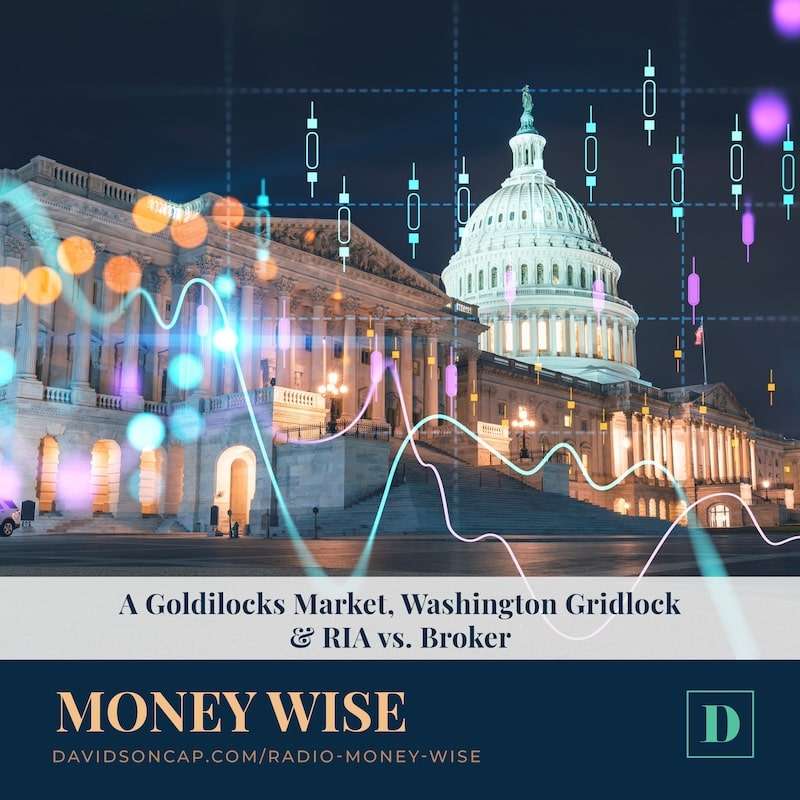There’s an Old Saying That’s Repeated Often, but is it Realistic?
At Davidson Capital Management, we firmly believe that all investors need continuing education — including investment advice. The world of investing is filled with a multitude of choices, a multitude of sales outlets, and a multitude of financial products, and it’s easy to get overwhelmed with it all. We have always felt that, given our business, it’s our duty to provide education to our clients and prospective clients, and that’s why we spend the second hour of our radio show and podcast each week discussing investor education topics.
Today, I’m going to take one of those discussions and dissect it here for you. It all stems from an article we’ve had for some time, but which we think is a good one to revisit from time to time. It’s titled “The Best Investment Advice Ever” and it’s a conversation that we have with prospective clients often.
Warren Buffet Advice: The Best Investment Advice Ever
The article I’m referring to begins with advice that is attributed to Warren Buffet, the legendary investor. He says, “Rule #1 is never lose money. Rule #2 is never forget Rule #1.”
This famous advice is repeated often, and we have said it often, too. However, it requires a little bit of clarification, because otherwise, it sounds completely unrealistic.
Why? Well, there’s not an investor out there who hasn’t made a less-than-successful investment decision at least once – including professionals like us! The truth is, you must take on a certain amount of risk to take advantage of the potential for capital appreciation, and for growth of your assets in order to meet your retirement or other financial goals.
With that truth in mind, I’ll share two points to clarify what Warren Buffet really means.
SEE ALSO: The Importance of Rebalancing: Why You Shouldn’t ‘Set and Forget’ Your Portfolio
1. It’s Really About Never Losing A LOT
So, we’ve established that there’s no such thing as never losing money in the markets. What I teach my clients and prospective clients, however, is that it’s not so much about how well you do on the upside, when the market is climbing. What’s much more important is how shallow you keep your hole on the downside, when the market is suffering losses. No investor is going to win all the time, but those that play the best defense and limit their losses are going to be the most successful in the long term. Even when they lose, they never lose BIG. They keep the hole shallow.
How do you accomplish that? Well, the most crucial strategies are to make sure your portfolio is diversified and actively managed. Never put all your eggs in one basket (or all your investments in the same asset class) and you’ll naturally suffer fewer deep losses. A great example of this is 2008 when the market crashed. We actively manage our clients’ portfolios and we had never weighted them too far in any one direction, meaning they didn’t see the same 30-50% losses that so many people with “set it and forget it” portfolios did.
So, you can’t avoid risk and you can’t avoid losses, but you can actively manage your risk which will help limit your losses. Why take on risk at all? Sure, you could stick to cash, CDs, or government bonds held to maturity, but you probably can’t come close to reaching your retirement goals that way. Your retirement nest egg will also have a very low probability of surviving throughout the remainder of your life.
SEE ALSO: 6 Benefits of Working with a Registered Investment Advisor
2. There’s a Difference Between Realized and Unrealized Losses
Something else I always point out to clients is that there’s a difference between realized losses and unrealized/paper losses. Unrealized losses don’t become true losses until you sell. So many investors did this in 2008 and during other dramatic market pullbacks, and they’re still licking their wounds staying out of the market. If they had ridden it out with unrealized losses, they’d be in a much stronger position now.
And here’s the thing with big, realized losses: It’s hard to come back from them, financially AND psychologically. Both are good reasons to ride out the bad times rather than taking realized losses.
Now, sometimes the markets don’t make sense. Sometimes down is up and up is down and the waters seem very cloudy. In times like that, it never hurts to get a little bit more liquid. You can raise your liquidity, lay in the weeds, and wait until things are a little clearer. BUT, you can’t wait too long. For one thing, the investment waters are never 100% clear, and for another, it pays to invest often. To be successful in investing, you can’t stay on the sidelines for long. You have to invest on a regular basis – and allocate your assets across numerous positions – to improve your batting average.
Recapping the Best Investment Advice Ever
Warren Buffet’s Rule #1 to never lose money should probably be something more like, “Never lose a lot of money.” Every investor will suffer losses but being able to mitigate your losses is what matters. Learn to be a better seller, rather than a better buyer, because there’s an important difference between realized and unrealized losses.
Whatever method you choose to reduce your risk – to make sure your hole remains as shallow as possible – it’s important to determine a system that allows you to actively manage your risk over time. Otherwise, you cannot be successful in the long term.
If you’d like to work with a professional Registered Investment Advisor (RIA) to ensure you’re properly managing risk in your portfolio, reach out today for a portfolio review and analysis from the Davidson Capital Management team. We’d love to hear from you and answer any investment-related questions you may have.




